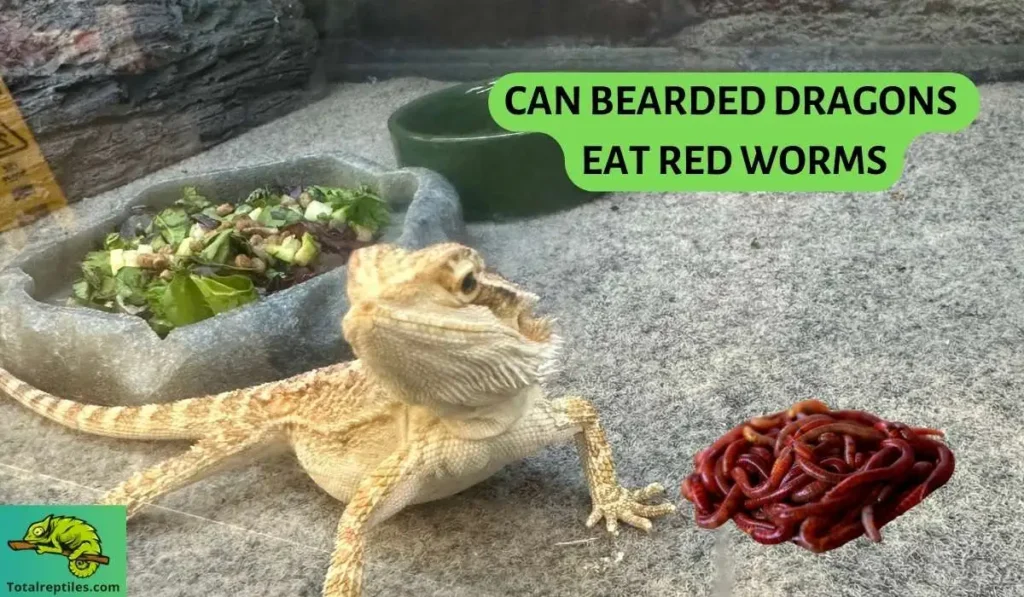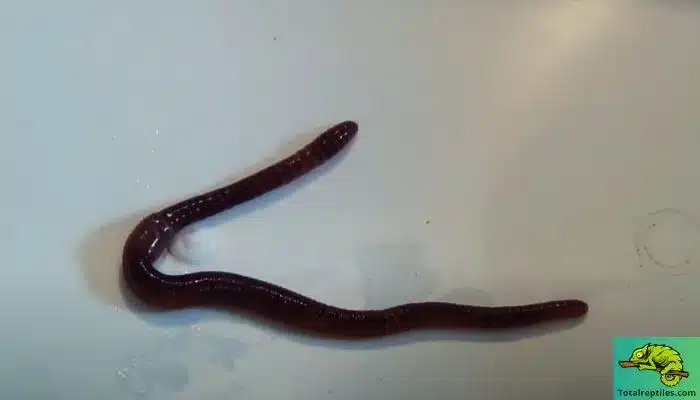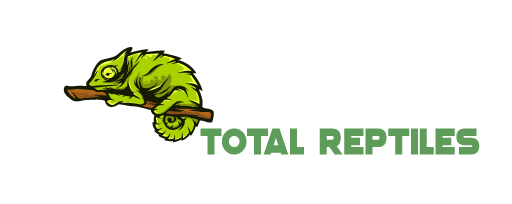Like many reptile species, Pogona vitticeps requires a varied diet with sufficient insect matter. Does that include red worms? In other words, can bearded dragons eat red worms?
You can definitely make a snack out of red worms for your dragons. Nevertheless, these worms should not be considered a primary meal despite their high protein content. While they are safe to consume, they lack the optimum nutrients your pet requires to thrive.
More information regarding the subject is given below in detail. Read and learn what is best for the reptile.

What Are Red Worms?
Red worms (Eisenia fetida) have many names: panfish, tiger, red wriggler, trout, brandling, etc. Their species is but one – the earthworm.
These worms are generally known as composting worms because they assist in the preparation of compost from rotting vegetables, plants, and kitchen waste (organic).
Many people use red worms to go green, as in utilize red worm cultivation to acquire plant promoters NPK (nitrogen, phosphorus, and potassium).
As a result, they are ideal for producing vermicompost alongside fish bait. They can live longer without water, making them perfect baits to attract fish with their lively movements.
Can Bearded Dragons Eat Red Worms?
Drawing from our comprehensive research, we have been able to determine that red worms are safe for your pet dragon.
However, they are not stapled foods to give daily. Bearded dragons require proper nutrient-filling meals containing plant and insect matter according to their age.
For instance, adults consume about 90% plant matter and 10% animal or insect matter, whereas juveniles consume 50% plant matter and 50% of the latter.
On the contrary, red worms are protein-packed, though they may result in an imbalanced diet if fed regularly. This is because they lack other essential components and minerals.
You should provide them in moderation to ensure minimal health complications for your dragon.
Benefits of Feeding Red Worms to Bearded Dragons
Despite the limitations of feeding red worms to a beardie, red worms are not without a few health benefits. Here are some reasons to opt for them:
- If you are searching for a high-protein treat, red worms are it.
- Usually, 4% is considered the ideal protein source for dragons, and red worms offer 10.5%!
- You can give red worms to juveniles or baby dragons, as they require high levels of protein for their rapid development and strength.
- These worms are very low in fat, preventing unwarranted obesity, weight gain, and other health issues.
- They are soft to chow on and easy on the digestive system.
- The high moisture content keeps the dragon hydrated, especially after brumation.
Nutritional Value of Red Worms
Once you take a quick scan of the nutritional profile of red worms, the next section of the guide will be easier to understand.
Based on experts’ estimates, the following is an approximate nutritional composition of the red worms:
| Red Worm Components | Value (%) |
| Moisture | 84.8 |
| Protein | 10.5 |
| Fat | 2 |
| Ash | 0.7 |
Red worms can be a delicious treat, but the owner needs to understand what is being fed to his/her pet reptile before making it a routine.
Risks of Feeding Red Worms to Bearded Dragons
While dragons may come to love red worms, this does not mean you shower them with excessive red worms.
In short, there are risks to feeding these to your pet in the end:
- Regular red worm consumption will lead to arrays of serious illnesses, e.g., obesity, an imbalanced diet, impaction, etc.
- Although the protein source is excellent in red worms, they do not offer many other crucial nutrients like calcium, copper, zinc, iron, etc.
- Daily feeding means an increase in fat content, which is unhealthy for the reptile.
- Red worms from outside may carry parasites or pesticides.
How to Feed Red Worms to Bearded Dragons?
Feeding red worms to your adorable beardie is relatively simple. But first, you must ensure that the worms are from a reputable pet store that sells reptile food specifically.
It will cover the safe insect-raising regulation that prevents parasite hatching.
- Plan a feeding chart that includes plant and insect materials as main meals.
- Use red worms as treats, so add them with insect matter once every 1 or 2 weeks and no more.
- Take a tweezer/tong to place one live red worm at a time in its feeding bowl or dish. Make sure to supervise the eating process.
- Try to place them before the dragon’s mouth if possible.
- Frozen red worms are also edible after thawing and serving.
- Some beardies might need a little encouragement at first.
Alternatives to Red Worms for Bearded Dragons
If the bearded dragon is not interested at all, you can opt for different treats instead of sticking to the red worms.
There are abundant options to pick from, for example:
- Butter worms
- Wax worms
- Superworms (larger mealworms)
- Caterpillars (vet consultation required)
- Hornworms
- Silkworms
- Roaches (Dubia)
- Grubs (mealworms, etc.)
- Crickets
- Slugs (vet consultation required)
- Other earthworms (only a selected species; vet consultation required)
Remember that intermittent treats should make up only 20% (adults, juveniles, and babies) of the overall insect and animal matter portion of the diet.
Can Bearded Dragons Eat Red Wigglers?
Red wigglers are also a type of earthworm best used as fish bait and for composting organic matter. They are smaller and survive longer without water.

But can bearded dragons eat red wiggler worms? Wigglers, or red wrigglers, are similar to red worms. Most reptiles, fish, or amphibian pet stores sell these as food.
We hope this information helps you determine that they are safe for the dragons as well. However, red wigglers are better as an occasional snack in the beardie’s varied diet. The potential risks and benefits of red worms apply here just the same.
Conclusion
Well, inland dragon owners often wonder– can bearded dragons eat red worms?
You can now rest assured that these worms are perfectly okay to give. However, offer them sparingly instead of making them a primary food source.
Otherwise, your reptile may face malnutrition in the long term, as red worms lack many nutrients.
Go for alternatives, if possible, but keep the fat content in check before introducing a new insect matter.
Finally, continue to observe your beardie for 24 to 48 hours whenever giving a new treat.
References
- K’Lona, J. Lofton. “Influence of Diet of the Red Wiggler Earthworm (Eisenia fetida) on Nitrogen, Phosphorus, and Potassium (NPK) Nutrients, Organic Matter, and Carbon: Nitrogen (C: N) Ratio within the Vermicompost Casts.” (2020)
- Boyer, Thomas H. “How to Feed Reptiles Right.”

